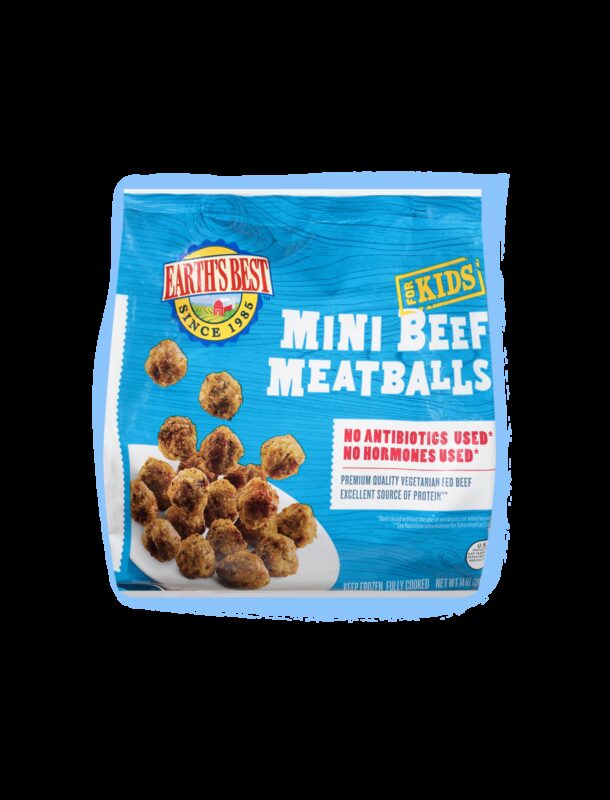
Earth's Best Nutritionist
Getting Your Toddler to Eat Protein
Toddlers can be famously challenging when it comes to picky eating. It can also be a phase where some days your tot simply prefers to shun protein-packed foods in favor of other options, like that creamy mac and cheese. While you may be worried your little one isn’t getting enough body-building protein (protein helps power your child’s healthy growth and development, tissue repair, a strong immune system and more), it may ease your mind to know that most toddlers meet the recommended amounts, according to the latest research.
How Much Protein Do Babies and Toddlers Need?
According to the USDA, children need the following amounts of protein:
- 1- to 3-year-olds: 13 grams of protein daily
- 4- to 5-year-olds: 19 grams of protein daily
To put that into perspective, here’s a list of easy-to-eat foods that can help your little one get all the protein he or she needs for balanced nutrition, while keeping those tiny tastebuds happy. If you space these out over the day over meals and snacks, you can easily meet your toddler’s protein needs. Make sure to always offer these foods in toddler-safe formats: for instance, while nuts and seeds are a choking hazard, incorporating nut or seed butters into smoothies, sandwiches or sauces or soups can be a safe and easy way to add them to your toddler’s diet.


While you may be worried your little one isn’t getting enough body-building protein (protein helps power your child’s healthy growth and development, tissue repair, a strong immune system and more), it may ease your mind to know that most toddlers meet the recommended amounts.
What are Some Easy to Eat, Toddler Friendly Foods with Protein Meat, Poultry and Seafood
Meat, Poultry and Seafood
- 1 oz. fully cooked poultry, bison or beef (7 grams)
- 1 large fully cooked egg (6 grams)
- 1 oz. cooked varieties of low mercury fish or seafood that’s rich in omega-3, such as trout, salmon, sardines, clams or chunk light tuna or (7 grams)
Dairy Products
It’s important to know that most plant milks typically do not contain the protein of cow’s milk (it’s common for plant milks to have 1 gram or less of protein per serving). Among fortified plant milks, only soy milk has a similar protein content. Opt for full fat versions until age 2, then talk with your pediatrician to decide whether a reduced fat option is best for your child.
- 1 8 fl oz. cup full fat yogurt or cow’s milk (8 grams)
- 1 8 oz. cup cottage cheese or Greek yogurt (23 grams)
Soy Foods
Plants have an abundance of amino acids that can also contribute to your toddler’s protein intake. While it’s true most plant proteins don’t contain all of the essential amino acids that animal proteins do (which is why they are sometimes referred to as “incomplete proteins”), kids don't need to eat meat to get the necessary protein to keep their bodies healthy and growing. Including a variety of beans, whole grains, legumes, nut butters, and other plant foods over the course of your toddler’s day ensures they will get all of the amino acids required for their bodies to build the proteins they need. Some nutrient-rich options include...
- 1 oz. nuts and seeds (between 3-8 grams)
- 2 Tbsp all natural nut and seed butters (between 6-8 grams)
- 1 cup cooked quinoa or amaranth (9 grams)
- 1 cup cooked oatmeal (6 grams)
- ½ cup cooked beans and lentils (7-9 grams)
- 1 cup whole wheat pasta (7 grams)
- Cooked vegetables: can add between 1-3 grams of protein per serving
This is for informational purposes only and should not be treated as medical advice. The content is not intended to be a substitute for professional medical advice, diagnosis, or treatment. Please always discuss any health and feeding concerns directly with your pediatrician. Never disregard professional medical advice or delay in seeking it because of something you have read above.
Explore our range of pouches and frozen foods perfect for your growing little one.


Our mission is to help little ones build healthy habits. As a member of our Earth’s Best® family, you'll receive handy emails packed with expert tips, recipes, offers, and more!












